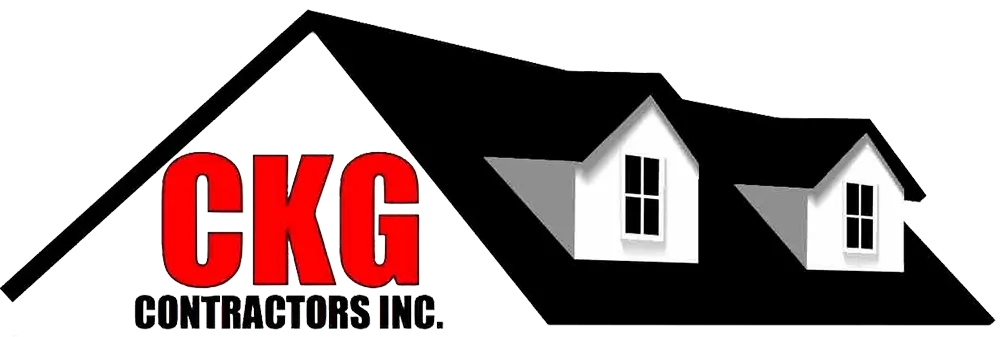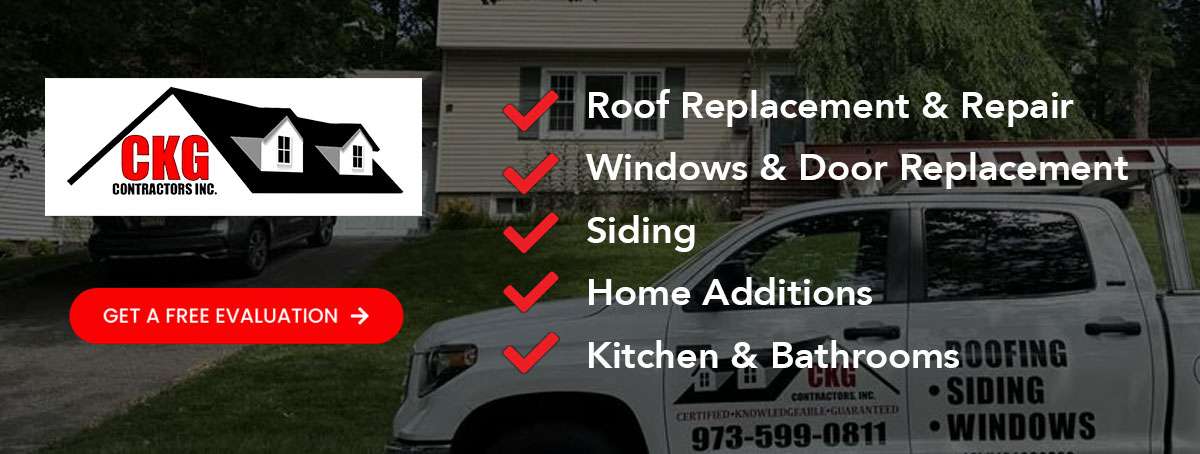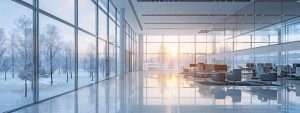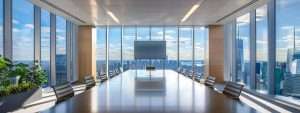Table Of Contents:
- Green Roofing Solutions by Commercial Roofing Contractors for Maximum Energy Savings
- What Are Green Roofing Solutions and How Do They Save Energy?
- What Types of Green Roofs Do Commercial Contractors Install?
- How Do Green Roofs Reduce Heating and Cooling Costs?
- What Environmental Benefits Support Energy Savings?
- How Can Commercial Roofing Contractors Design and Install Effective Green Roofs?
- What Long-Term Cost Savings Can Commercial Property Owners Expect From Green Roofing?
- Who Benefits Most From Green Roofing Solutions Provided by Commercial Roofing Contractors?
- How Can Rooftop Gardens and Usable Green Spaces Enhance Commercial Buildings?
- What Are Common Challenges in Green Roof Installation and How Do Contractors Overcome Them?
- How Do Commercial Roofing Contractors Measure and Report Energy Savings From Green Roofs?
- Frequently Asked Questions
Green Roofing Solutions by Commercial Roofing Contractors for Maximum Energy Savings
Green roofing solutions provide an innovative approach to reducing energy consumption while enhancing the aesthetic and environmental value of commercial buildings. By integrating vegetation on roof systems, these solutions not only insulate structures from extreme temperatures but also contribute significantly to managing stormwater, reducing carbon emissions, storm damage repair, and extending roof lifespan. Today’s commercial roofing contractors are increasingly adopting green roof installations as part of a holistic approach to building sustainability. Their techniques blend state-of-the-art waterproofing, drainage systems, and proper plant selection to optimize energy savings. These roofing systems are designed with a focus on enhancing thermal performance, lowering utility bills, and mitigating urban heat island effects. As energy costs soar and environmental regulations tighten, commercial property owners are looking to these qualified contractors for cost-effective, long-term roofing solutions that support both operational efficiency and a greener future.
In this article, we explore the concept of green roofing solutions and detail how they save energy. We also discuss the design, installation, maintenance, and long-term cost benefits associated with these roofs, as well as the challenges that contractors often need to overcome. Furthermore, we examine how additional amenities like rooftop gardens add not only a functional outdoor space but also further enhance energy efficiency. By understanding the relationship between green roofing elements and energy reduction, stakeholders can make informed decisions to incorporate these sustainable solutions into their commercial properties.
The following sections elaborate on critical aspects: • The different types of green roofs installed by commercial roofing contractors and how they function to minimize heating and cooling costs. • The role of effective design, including plant selection and proper waterproofing, in ensuring optimal performance. • A detailed analysis of the long-term cost savings through extended roof lifespan, reduced energy consumption, and compliance with green building codes. • How green roofing solutions benefit commercial property owners, building managers, and architects. • The added value of integrating rooftop gardens and modular green spaces. • Common challenges encountered in installation and strategies adopted by roofing contractors. • Finally, an insight on how energy savings from green roofs can be measured and reported with advanced tools and case studies.
Below, each section is explored in-depth to provide a comprehensive understanding of green roofing as an energy-saving technology.
What Are Green Roofing Solutions and How Do They Save Energy?
Green roofing solutions involve the application of a vegetative layer, planted over a waterproof membrane, installed on top of a flat or slightly sloped roof. The first and most direct way that green roofing saves energy is by creating additional insulation. The plant layer minimizes heat transfer between the building and the external environment. In warmer climates, green roofs reduce the absorption of solar radiation, thereby decreasing cooling demands. In cooler periods, they extend the retention of heat within the building envelope.
The efficiency of green roofs is primarily due to their ability to moderate indoor temperatures. The combination of soil, vegetation, and substrate acts as a thermal barrier. Studies have shown that buildings with green roofing can experience up to 40% reduction in energy requirements for cooling in summer months. Additionally, the process of evapotranspiration from the plants contributes to cooling the surrounding air. This natural cooling mechanism not only reduces the reliance on air conditioning systems but also improves the overall indoor air quality.
Another significant benefit stems from the reduction of the urban heat island effect. With increasing urbanization, concrete and asphalt surfaces absorb and re-radiate energy, leading to elevated urban temperatures. Green roofs help counteract this phenomenon by reflecting more sunlight and incorporating natural cooling processes through plant transpiration. The resulting lower ambient temperatures benefit surrounding areas and decrease the energy absolute load on city infrastructures.
Furthermore, green roofs contribute to energy savings indirectly by mitigating stormwater runoff and reducing the necessary infrastructure investments. With the additional layer, less heat is transferred to the building and adjacent systems, ultimately reducing energy losses through conduction. In summary, green roofing provides a sustainable, natural method to enhance energy efficiency while promoting an ecosystem-friendly environment for commercial properties.
What Types of Green Roofs Do Commercial Contractors Install?

Commercial roofing contractors primarily install two main types of green roofs: intensive and extensive systems. Each type offers a unique combination of insulation, aesthetic appeal, and maintenance requirements, allowing property owners to choose an option tailored to their specific energy-saving needs.
Intensive Green Roofs
These are designed with deep soil layers that support a diverse range of plants, including shrubs, trees, and garden beds. Intensive green roofs resemble traditional gardens, providing ample insulation due to the higher substrate depth, which results in superior thermal performance. However, they require a robust supporting structure to bear the additional weight and more extensive maintenance.
Extensive Green Roofs
Extensive green roofs utilize a shallow growing medium and are planted with sedums, grasses, and other low-maintenance, drought-tolerant species. While they provide slightly lower levels of insulation compared to intensive roofs, they are lighter in weight and require minimal upkeep. Extensive systems are ideal for commercial applications where energy efficiency and cost-effectiveness are the primary concerns.
Semi-Intensive or Modular Green Roofs
Another option increasingly popular among contractors is the semi-intensive or modular green roof. These systems offer a balance between the two extremes, combining the lightweight nature and low maintenance of extensive roofs with an enhanced aesthetic appeal. Modular panels or trays, pre-planted in a controlled environment, are installed on the roof, ensuring consistent performance and energy insulation.
Biodiverse Green Roofs
Additionally, some commercial roofs integrate biodiversity by using a variety of plant species and soil depths. These biodiverse systems are engineered to maximize energy savings by strategically combining plants with high evapotranspiration rates alongside those that offer dense coverage. This enhances overall insulation and optimizes energy reduction during both summer and winter.
Comparative Advantages and Considerations
Each type of green roof provides distinct benefits. Intensive green roofs deliver the maximum insulation and energy efficiency but at a higher installation cost. Extensive roofs are more economical and easier to maintain while still contributing significantly to energy savings. Modular systems present an effective compromise, combining ease of installation with improved aesthetic and thermal benefits. The choice depends on factors such as building load capacities, budget constraints, and specific energy-saving objectives on both short-term and long-term horizons.
Commercial contractors assess these criteria carefully before recommending the most effective solution. They also consider the local climate, structural requirements of the building, and future maintenance plans, ensuring the selected system yields optimal energy savings and overall performance.
How Do Green Roofs Reduce Heating and Cooling Costs?
Green roofs play a critical role in reducing both heating and cooling costs by providing effective insulation and natural temperature regulation. Their performance is largely due to the combined effects of the vegetative layer and substrate. The green roof acts as an insulator, reducing the transfer of external temperature extremes into the building interior. During the summer, vegetation reflects solar radiation, while evapotranspiration cools the air, thereby reducing reliance on mechanical cooling systems like air conditioners. Conversely, in winter, the soil and plant layer retains heat, decreasing the loss of warm air from the building, which reduces the heating load on the building’s furnace systems.
The energy reduction properties of green roofs are quantifiable. Research indicates that green roofs can lower interior temperatures by up to 5–10°C when compared to traditional roofing materials. This temperature moderation directly translates to lower energy consumption and reduced utility bills. Moreover, green roofs minimize voltage spikes and power load during peak hours, allowing HVAC systems to operate more efficiently and with fewer interruptions.
Additionally, by reducing insulation loss, green roofs contribute to a more stable indoor environment. The continuous barrier provided by the dense vegetation and the underlying growing medium ensures minimal thermal bridging—a phenomenon that often leads to energy loss in conventional roofs. This consistency in the building’s temperature further reduces the operational energy required for heating and cooling systems.
Furthermore, the long-term durability of green roofs ensures that the energy savings are maintained over the lifespan of the building’s roof. With proper maintenance, these roofs can significantly extend the service life of the roof structure, reducing the frequency and cost of major repairs or replacements. The integration of cutting-edge materials in waterproofing and drainage systems by modern commercial roofing contractors further enhances these cost savings. Overall, green roofs provide an innovative, natural solution to reduce heating and cooling costs while transforming building interiors into more comfortable, sustainable environments.
What Environmental Benefits Support Energy Savings?
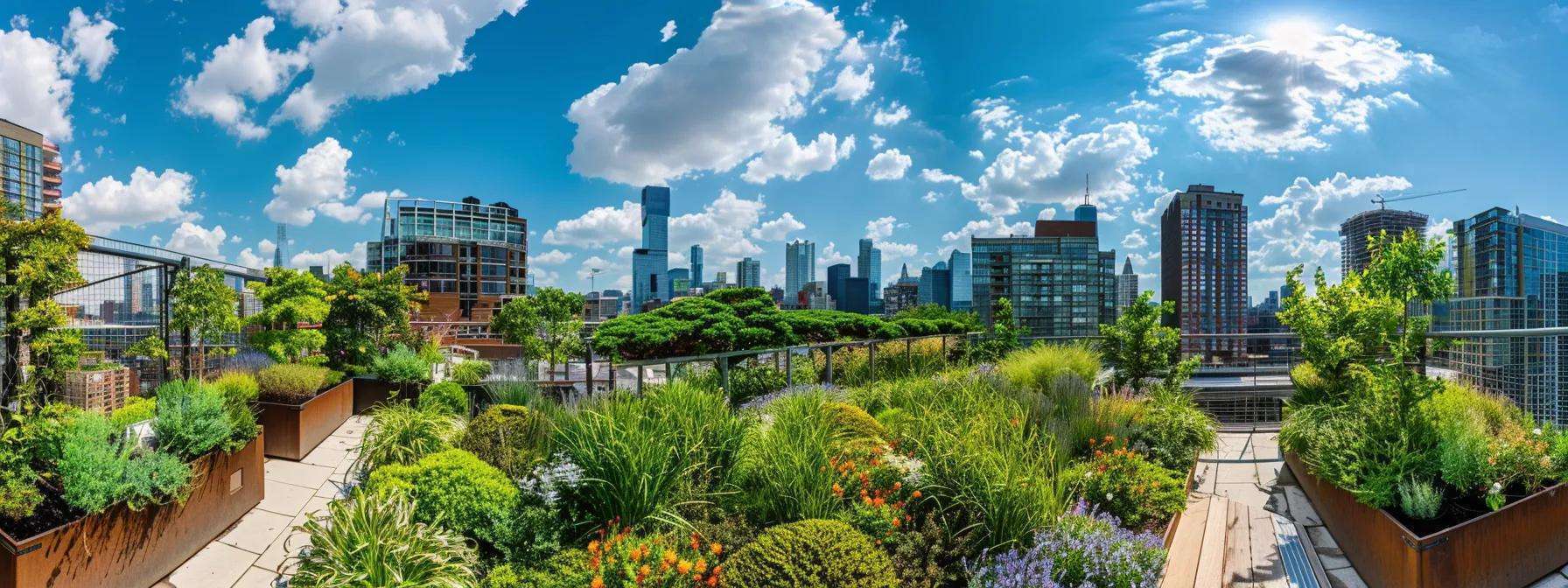
Green roofs offer a multitude of environmental benefits that not only improve energy savings but also contribute to broader ecological goals. A primary benefit of green roofs is their ability to reduce greenhouse gas emissions indirectly by lowering the energy demands of a building. When energy consumption is reduced, there is a corresponding decrease in the burning of fossil fuels, ultimately leading to lower carbon dioxide and other harmful emissions.
Another environmental advantage centers around stormwater management. Green roofs absorb and retain rainwater, thereby reducing the volume of stormwater runoff that typically overwhelms municipal drainage systems. This natural retention reduces the need for energy-intensive water treatment processes and minimizes flood risks. Additionally, the filtered water from green roofs can sometimes be recycled for non-potable uses, further contributing to resource efficiency.
Biodiversity enhancement is also a significant benefit. By introducing a variety of plant species, green roofs create urban habitats that support pollinators, birds, and beneficial insects. This urban biodiversity helps restore ecological balance and enhances the quality of life in densely populated areas. Furthermore, the vegetation on green roofs combats the urban heat island effect by releasing moisture into the air through transpiration, which cools urban environments and reduces ambient temperatures.
From an air quality perspective, green roofs are natural air filters. They trap airborne particulates and absorb pollutants, improving the overall quality of urban air. This improvement in air quality leads to enhanced health outcomes for building occupants and surrounding communities. All of these environmental benefits directly support energy efficiency. For instance, by lowering ambient temperatures and reducing the need for mechanical cooling systems, the energy-efficient performance of a building is significantly optimized.
In addition, the aesthetic benefits of green roofs contribute to property value appreciation and community well-being. Urban planners and property developers are increasingly valuing green infrastructure not only for its sustainability credentials but also for its capacity to create healthier, more livable environments. The cumulative environmental benefits thus create a supportive context for energy savings through reduced operational costs, minimized resource usage, and enhanced local ecosystems.
How Can Commercial Roofing Contractors Design and Install Effective Green Roofs?
Commercial roofing contractors design and install effective green roofs through a meticulous process that combines advanced engineering techniques with sustainable design principles. The process begins with a comprehensive assessment of the existing roof structure to determine load-bearing capacity and suitability for green roof installation. Contractors work closely with structural engineers to ensure that the building can support the additional weight from the soil, vegetation, and water retention layers. After determining structural feasibility, contractors move on to design the system with an emphasis on maximizing energy efficiency.
What Is the Role of Plant Selection in Energy Efficiency?
Plant selection is pivotal in optimizing a green roof‘s energy-saving potential. Contractors choose plant species based on their drought tolerance, growth patterns, and shading capabilities. Plants with high evapotranspiration rates are preferred for their superior cooling effects. In addition, a diverse mix of species is selected to improve the roof‘s overall insulation properties. The specific selection may vary depending on the local climate and building orientation. Research indicates that the right combination of flora can improve thermal performance by creating a denser cover, thereby enhancing energy savings by stabilizing indoor temperatures.
How Do Waterproofing and Drainage Systems Enhance Green Roof Performance?
Waterproofing serves as the first line of defense against potential roof leaks that can compromise a building’s structural integrity and energy efficiency. Modern green roof systems incorporate a robust waterproof membrane that is resistant to microbial degradation, ensuring long-term durability. Coupled with efficient drainage systems, these membranes facilitate rapid water dispersion while preventing waterlogging of the substrate. Proper drainage is critical in maintaining the health of the vegetation by avoiding stagnation and ensuring that excess rainwater does not lead to soil erosion or structural damage. Contractors typically use layered systems combining filtration, drainage, and protective membranes to guarantee that energy-saving benefits are sustained over time without compromising structural safety.
What Are the Steps in a Professional Green Roof Installation?
Professional installation involves several methodical steps. First, an initial inspection and engineering analysis are performed. Next, any necessary roof repairs or reinforcements are completed to ensure the structure can handle the additional load. Following this, a high-quality waterproof membrane and root barrier are installed. Contractors then lay a drainage layer, which is crucial for preventing moisture from accumulating. After these foundational layers are in place, a growing medium is added, and plant materials are strategically installed and tested for optimal growth patterns. Each layer is carefully inspected for certification and performance verification before the final green roof is handed over to the client. This comprehensive process ensures that energy efficiency is maximized from installation through the roof’s entire lifespan.
The design and installation phase is critical to ensuring that the green roofing system delivers consistent energy savings. With proper planning and execution, these roofs not only reduce energy bills by maintaining interior temperature stability but also provide additional benefits such as extended roof life and reduced environmental impact. Contractors continue to innovate by integrating smart sensors and management systems that monitor moisture levels, temperature fluctuations, and plant health, further enhancing the performance and sustainability of the green roof over its operational lifetime.
What Long-Term Cost Savings Can Commercial Property Owners Expect From Green Roofing?
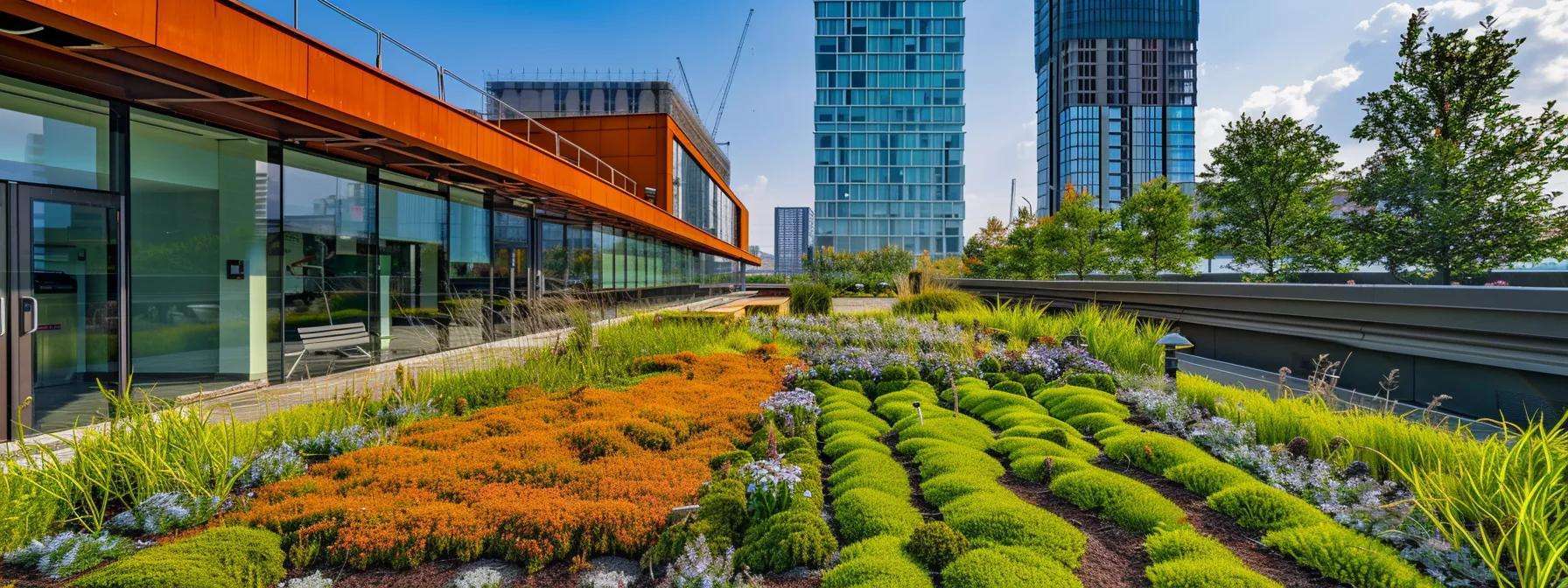
Commercial property owners can expect significant long-term cost savings from green roofing solutions as these systems contribute to reduced maintenance, lower energy bills, and extended roof lifespan. Initially, while the installation cost might be higher than traditional roofing, the return on investment becomes apparent in the form of decreased operational costs over time. The robust insulation properties of green roofs translate directly into lower energy consumption for both cooling in the summer and heating in colder months. Studies have demonstrated that green roofs can reduce energy costs by 10–40%, depending on the building and location, resulting in substantial savings over a roof’s lifespan.
How Does a Green Roof Extend Roof Lifespan?
Green roofs extend the lifespan of a building’s roof by protecting the roofing materials from harsh weather conditions and ultraviolet radiation. The multiple layers in a green roof system shield the primary roof from direct exposure to the elements. This reduction in weathering and thermal shock greatly decreases the rate of deterioration of conventional roofing materials such as asphalt or bitumen. Additionally, the presence of vegetation creates a microclimate around the structure that minimizes water penetration and freeze-thaw cycles. Consequently, property owners may see up to a 50% increase in roof longevity when compared to conventional roofing systems.
What Incentives and Green Building Codes Support Green Roofing Adoption?
Various local governments and municipalities offer incentives and rebates to encourage the adoption of green roofing. These incentives can include tax credits, grants, or expedited permitting processes. Many green building codes now require or favor sustainable roofing solutions in new developments and retrofits, making green roofs an attractive option for adherence to regulatory standards. In regions with strong environmental regulations, such as parts of North America and Europe, adopting green roofs not only meets regulatory requirements but also enhances a building’s marketability as an eco-friendly property.
How Do Energy Savings Translate Into Reduced Utility Bills?
The energy savings achieved by green roofs directly lower utility bills through reduced demand on HVAC systems. With enhanced insulation properties and natural cooling effects, less energy is required to maintain comfortable indoor temperatures. This reduction in energy usage not only lowers monthly operating costs but also decreases the overall carbon footprint of the building. Over the long term, as energy prices continue to fluctuate upward, the consistent savings from a well-implemented green roof become even more significant, providing a measurable return on investment that can be tracked through detailed energy consumption reports.
To illustrate these cost savings, consider a comparative table outlining traditional versus green roofing. This table highlights how the initial higher installation cost of a green roof is offset by lower energy expenditures and extended maintenance intervals.
Before the table above, it is important to note that energy savings are not only beneficial from an operational standpoint but also improve overall property value and environmental compliance. After reviewing the table, one can conclude that while green roofs require a higher initial capital investment, their reduced energy use, extended durability, and lower maintenance costs lead to substantial long-term savings for commercial property owners.
Who Benefits Most From Green Roofing Solutions Provided by Commercial Roofing Contractors?
Green roofing solutions deliver a wide range of benefits extending across various stakeholder groups in the commercial real estate sector. Among the top beneficiaries are commercial property owners, building managers, architects, and ultimately, the occupants of the building.
Why Should Commercial Property Owners Invest in Green Roofs?
Commercial property owners benefit from green roofs by enjoying lower operating costs through significant energy savings and reduced HVAC loads. The natural insulation provided by the green roof results in a steadier indoor environment, leading to decreased energy consumption for temperature control. Furthermore, green roofs contribute to increased property value by boosting curb appeal and ensuring compliance with green building standards, which are increasingly prized in today’s real estate market. For investors, a green roof represents both a sustainable practice and a financially sound decision that offers a faster payback period compared to traditional roofing methods.
How Do Building Managers Maintain Green Roofs for Optimal Energy Savings?
Building managers are tasked with the regular upkeep of green roofs to ensure that they continue to perform effectively. Routine maintenance, including irrigation, vegetation pruning, and monitoring of waterproofing and drainage systems, is essential. Effective management of these tasks not only preserves the roof’s energy-saving capabilities but also prevents issues that might arise from plant overgrowth or blockages in the drainage layer. Many commercial roofing contractors now offer maintenance packages that include periodic inspections, seasonal adjustments, and integrated sensor systems to monitor moisture and temperature levels. Such proactive management ensures that the long-term energy benefits of the green roof are sustained and that maintenance costs remain predictable.
What Role Do Architects Play in Specifying Green Roofing Systems?
Architects play a crucial role by incorporating green roofing solutions into the design phase of a building project. Their expertise is essential in selecting appropriate systems that respond to local climatic conditions and structural requirements. By specifying materials, plant species, and supporting systems that maximize energy efficiency, architects can ensure that the green roof performs as intended. They often collaborate with commercial roofing contractors to develop tailored solutions that meet both aesthetic and functional criteria. Through thoughtful design, architects help create buildings that are not only visually appealing but also efficient in energy use, contributing to the sustainable goals of the project while delivering measurable cost benefits over time.
By understanding the roles and benefits to each stakeholder, it becomes evident that green roofing solutions are a comprehensive investment. They deliver value by improving energy efficiency, lowering operational costs, enhancing property value, and even contributing to local environmental quality through improved stormwater management and reduced urban heat island effects.
How Can Rooftop Gardens and Usable Green Spaces Enhance Commercial Buildings?

Rooftop gardens and usable green spaces are increasingly recognized as valuable extensions of commercial buildings. Beyond the inherent energy-saving properties of green roofs, these spaces offer additional functional and aesthetic benefits that enhance overall building performance and tenant satisfaction.
What Are the Energy Efficiency Advantages of Rooftop Gardens?
Rooftop gardens improve energy efficiency by providing an additional layer of insulation. In summer, they create a natural cooling effect by blocking direct sunlight and promoting evapotranspiration, which reduces ambient temperature around the building. In winter, these gardens act as additional insulation, retaining heat and lowering the energy demand for heating. Moreover, rooftop gardens improve the overall thermal mass of the building, contributing to a more regulated indoor temperature. The combination of vegetative cover, soil, and water retention results in a multiphase thermal barrier that significantly minimizes thermal fluctuations.
How Do Green Roofs Improve Building Aesthetics and Tenant Satisfaction?
The transformation of an unused rooftop into a green oasis contributes to the visual and functional appeal of a commercial building. Rooftop gardens offer tenants an attractive, relaxing space that can be used for breaks, social gatherings, or even corporate events. The presence of green spaces has been linked to improved mental health and productivity, yielding an indirect benefit on energy efficiency by reducing the need for artificial lighting during daytime hours. Aesthetically pleasing environments also improve tenant retention rates and enhance the building’s reputation in a competitive market. The integration of green spaces demonstrates a commitment to sustainability, resonating with environmentally conscious tenants and visitors alike.
What Are Modular Green Roofs and Their Benefits for Commercial Properties?
Modular green roofs consist of pre-planted panels or trays that can be easily installed and maintained. These systems offer a flexible, scalable solution that can be customized to meet a building’s specific energy and design requirements. The benefits include a streamlined installation process, lower upfront costs compared to traditional green roofs, and the ability to replace individual modules without disrupting the entire system. Modular solutions also support energy efficiency by assuring a consistent layer of vegetation across the roof, thereby providing uniform insulation. For building owners, modular green roofs present an attractive option that combines efficiency, aesthetics, and ease of maintenance.
Rooftop gardens and green spaces not only contribute to energy savings but also become a selling point for commercial properties. They create a harmonious work environment, draw higher-quality tenants, and add an element of modern sustainability that keeps pace with current environmental trends. This holistic approach to integrating usable green spaces amplifies the functional role of traditional green roofs while adding significant value in terms of tenant satisfaction and property appeal.
What Are Common Challenges in Green Roof Installation and How Do Contractors Overcome Them?
Implementing a green roof system is not without its challenges. Commercial roofing contractors must address several issues during the design and installation phases to ensure that the system performs reliably and delivers its promised energy savings. Common challenges include waterproofing, drainage, plant health maintenance, and overall roof structure support. Overcoming these challenges involves a combination of advanced engineering, robust material selection, and regular maintenance practices.
How Is Waterproofing Ensured to Protect Energy Efficiency?
Waterproofing remains a critical factor in green roof construction. If the waterproof membrane fails, it can lead to water infiltration that not only compromises the roof structure but also diminishes the energy-saving benefits of the system. Contractors mitigate this risk by using high-quality, durable waterproof membranes specifically designed for green roof applications. These membranes are installed in multiple layers, often incorporating a root barrier layer to prevent plant roots from penetrating and damaging the roof. The coordinated installation of these layers is essential to create a continuous, unbreached seal. Contractors also perform rigorous testing before and after installation to ensure that the waterproofing meets industry standards and enhances the overall energy efficiency of the building.
What Drainage Issues Affect Green Roof Performance?
Proper drainage is crucial for the performance of any green roof system. If water is allowed to accumulate excessively, it can lead to plant stress, increased weight on the structure, and potential failure of the drainage system. To address this, contractors install a well-engineered drainage layer that facilitates the rapid dispersal of excess water while retaining sufficient moisture for plant health. The use of specialized drainage mats and filter fabrics helps manage water flow, ensuring that the growing medium remains at an optimal moisture content. Regular inspections and maintenance further help identify and resolve any drainage-related issues that might otherwise impair the roof’s energy efficiency.
How Do Contractors Manage Plant Health for Sustainable Energy Savings?
Plant health is paramount to maintaining the energy-saving benefits of green roofs. Diseased or dead vegetation can reduce the insulation properties and overall effectiveness of the system. Contractors manage plant health by selecting species that are well-adapted to the local climate, require minimal water, and are resistant to common pests and diseases. They also implement a maintenance schedule that includes regular watering, fertilization, pruning, and pest control measures. Advanced sensor technologies are sometimes employed to monitor soil moisture and plant vitality, enabling proactive interventions that preserve optimal greening levels. A healthy plant cover ensures that the roof continues to provide effective thermal insulation and energy savings throughout its life.
Despite the challenges, innovative design, precise construction techniques, and vigilant maintenance enable commercial roofing contractors to deliver robust green roof systems. These strategies ensure that the energy-saving benefits of green roofs are not compromised and that commercial properties receive a sustainable, long-term roofing solution.
How Do Commercial Roofing Contractors Measure and Report Energy Savings From Green Roofs?
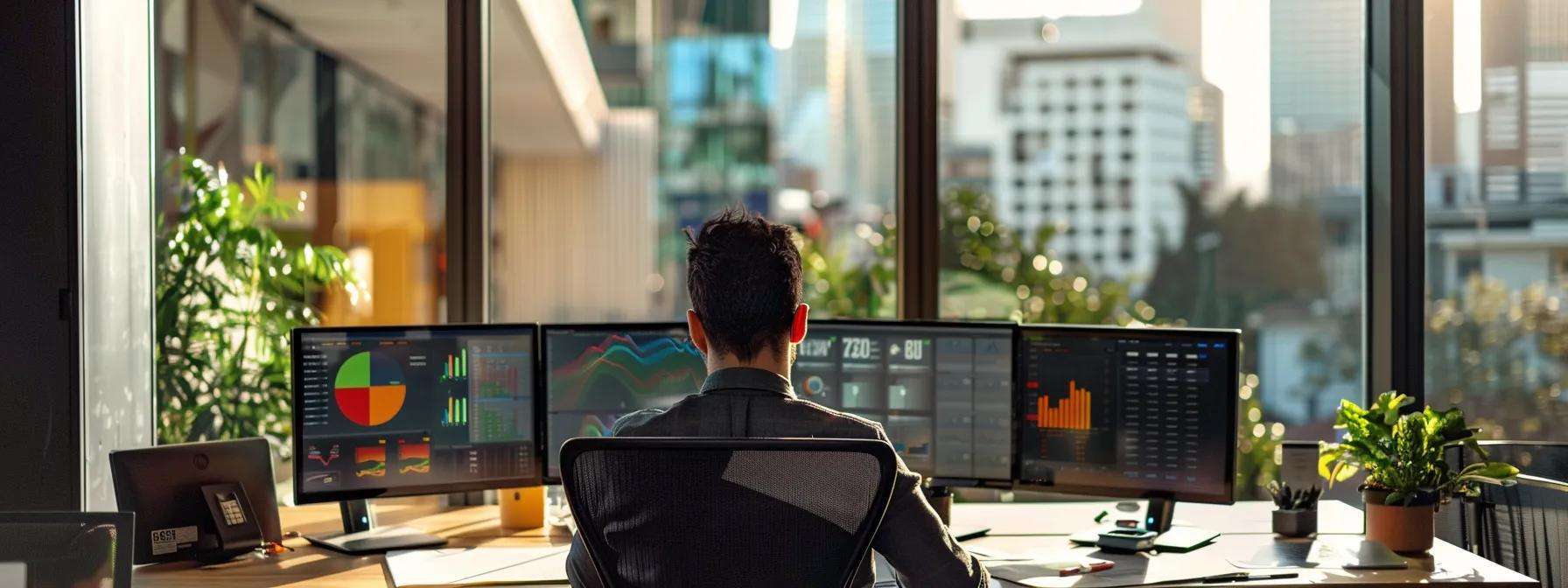
Commercial roofing contractors deploy advanced tools and methods to measure and report the energy savings realized by green roof installations. Energy efficiency is quantified through a series of metrics and performance indicators that assess reductions in heating and cooling costs, improvements in indoor thermal comfort, and overall reductions in energy consumption. Contractors typically use sensor-based monitoring systems that record temperature fluctuations, moisture levels, and HVAC energy usage before and after green roof installation.
What Tools and Metrics Are Used to Assess Energy Efficiency?
A variety of tools are used to assess energy efficiency in green roofs. Infrared thermography cameras capture temperature differentials between green roofs and traditional roofing systems. Data loggers record internal and external temperature variations over extended periods. Energy consumption meters track reductions in electricity usage attributable to improved insulation. Additionally, simulation software models the thermal performance of the green roof system, allowing contractors to predict energy savings with high accuracy. Key metrics such as the coefficient of performance (COP) of HVAC systems, energy savings percentage, and payback period are reported to property owners as part of a comprehensive post-installation review.
How Can Property Owners Monitor Green Roof Benefits Over Time?
To ensure that a green roof continues to deliver energy savings over its lifespan, property owners are provided with detailed monitoring and reporting protocols. Contractors often install remote monitoring systems that transmit data in real time to a central management platform. This data includes energy consumption patterns, temperature profiles, and even plant health indicators. Periodic reports are generated to highlight trends and validate the performance of the roof over time. These reports not only provide accountability but also guide future maintenance and operational adjustments, ensuring the system remains optimized for energy efficiency.
What Case Studies Demonstrate Successful Energy Savings?
Several case studies from commercial projects illustrate the successful integration of green roofs and the associated energy savings. For example, a large office complex in a major urban area was retrofitted with an extensive green roof system, resulting in a 35% reduction in air conditioning costs during peak summer months. Another project involving an industrial facility showed a reduction of 25% in total energy consumption over a four-year period following the installation of a biodiverse green roof system. These case studies are often published by roofing contractors and third-party evaluators, providing concrete evidence of the energy-saving benefits that can be achieved. They serve as valuable benchmarks for property owners considering similar investments.
A table summarizing key performance indicators from different projects underscores the significant energy savings and cost reductions enabled by green roofs:
Prior to the table, it is essential to recognize that these metrics provide both qualitative and quantitative measures of how green roofs impact energy performance. After reviewing the data, property owners and managers can expect meaningful reductions in utility costs and an extended roof life through the adoption of green roofing solutions.
Reporting on energy savings not only validates the effectiveness of the installation but also supports future investments in sustainable building practices. Regular monitoring and tangible metrics offer a clear financial and environmental return on investment that reinforces the benefits of choosing a qualified commercial roofing contractor.
Frequently Asked Questions
Q: How long does it take for a green roof to start saving energy? A: Green roofs begin to deliver energy savings almost immediately after installation, though optimal performance is typically observed after the vegetation establishes, which can take 6–12 weeks. During this period, plants fully develop their insulating and cooling properties, leading to significant reductions in energy usage for both cooling and heating. The initial benefits are supplemented by long-term improvements in indoor thermal comfort and reduced HVAC load.
Q: Are there any maintenance challenges that could affect energy savings from a green roof? A: Yes, maintaining optimal plant health, ensuring proper drainage, and periodically inspecting waterproof membranes are critical maintenance aspects. However, many contractors offer comprehensive maintenance packages to ensure these systems function properly over time. Regular preventative maintenance helps sustain consistent energy savings and prevents issues that might otherwise lead to decreased insulation properties.
Q: How do energy savings from a green roof compare to traditional roofing systems? A: Compared to traditional roofing systems, green roofs can lower energy consumption by 10–40% depending on the climate and building factors. This significant reduction is due to enhanced insulation, cooling through evapotranspiration, and reduced thermal bridging. Studies have confirmed that buildings with green roofs often experience more stable indoor temperatures, leading to lower reliance on HVAC systems and reduced utility bills.
Q: What factors determine the cost-effectiveness of a green roof installation? A: The cost-effectiveness of a green roof depends on several factors, including the type of green roof system (intensive, extensive, or modular), local climate conditions, building structure, and available maintenance support. While the initial installation may be higher than traditional systems, the long-term savings on energy bills, extended roof lifespan, and potential tax incentives or rebates contribute significantly to overall cost-effectiveness. Each project is evaluated on a case-by-case basis to determine the return on investment.
Q: Can green roof systems be customized to suit different building requirements? A: Absolutely. Commercial roofing contractors customize green roof systems based on building requirements such as load-bearing capacity, energy-saving goals, local climate, and aesthetic preferences. Customization may involve selecting specific plant species, tailoring the depth of the growing medium, and integrating modular systems for easy maintenance. These tailored solutions not only optimize energy savings but also ensure that the green roof complements the overall design and functional needs of the building.
End of Article
